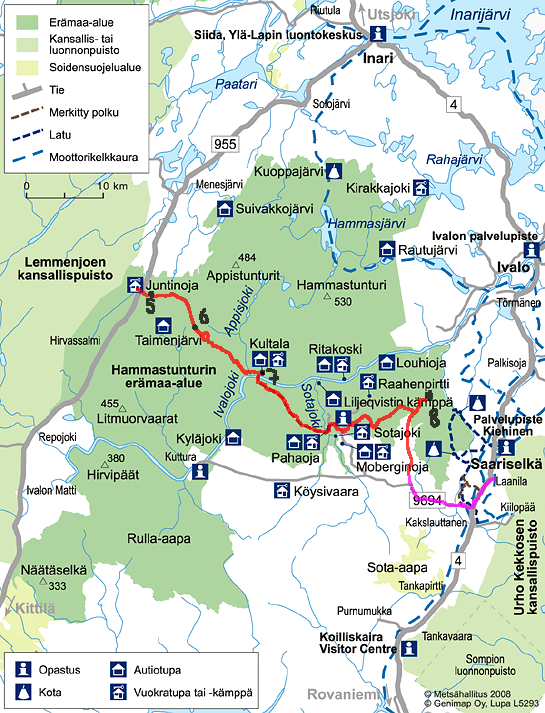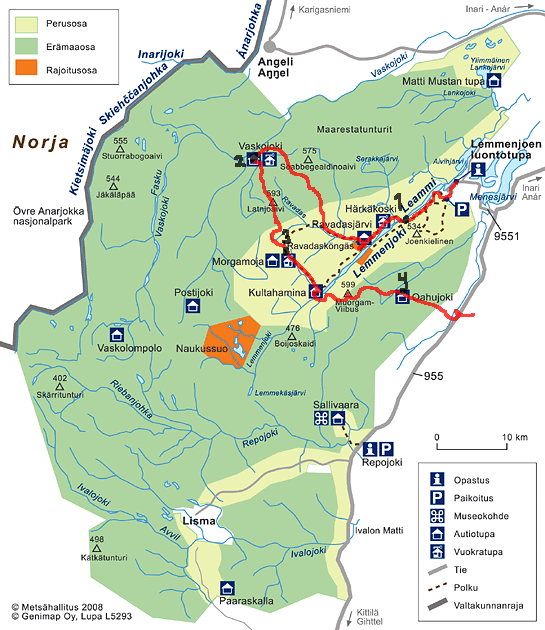From Njurgalahti, Lemmenjoki to Laanila, Saariselkä
20.—28.7.2009
This is a story about a 8-day 160-km hike in the Lemmenjoki national park and Hammastunturi wilderness area in the Finnish Lapland. The two hikers are Timo and Tiiti Kellomäki.
Our way to hike is to go there by trains and buses, use only a map and a compass instead of a GPS, and make food out of real, dried ingredients. Timo had made a wish to 'walk more and stay the nights in huts whenever possible.'
There are some marked paths in the national park, but most of the walking was either in forests, bushes, or barren felltops. Open areas are naturally the easiest to travel, but during the dry midsummertime it's hard to find water up there. Our backpacks weighed around 25 kg in the beginning, and each day reduces the food by roughly 1 kg per eater.
Wilderness huts? The government manages some open wilderness huts in national parks and wilderness areas, and people can just walk in and stay the night. They even provide firewood and a gas cooker. Such open huts are traditional in the wilderness areas in Finland, formerly used by reindeer herdsmen or hunters. Of course we could have stayed in a tent, but the huts also offer a possibility to dry shoes and socks.
Water? Imagine carrying the drinking water for 8 days and two people. Then agree that the water has to be taken from the nature. Since there is absolutely nothing in the forests of Lapland, there's also nothing to pollute the water. Besides, the stream water is much clearer than in the southern parts of Finland. Anyway: if you find running water, you can drink it.
Food? Dried goods make tasty meals. Take soy or lentils or peas for protein, and rice or mashed potatoes powder for filling. Massive amounts of bread were also consumed. The nicest thing is: When you hike, you use very much energy. So it's OK to eat real butter.
Hmm, maybe I should write a bit more about our way of hiking, because you foreigners are so oblivious to the Finnish style... :)
See also:

